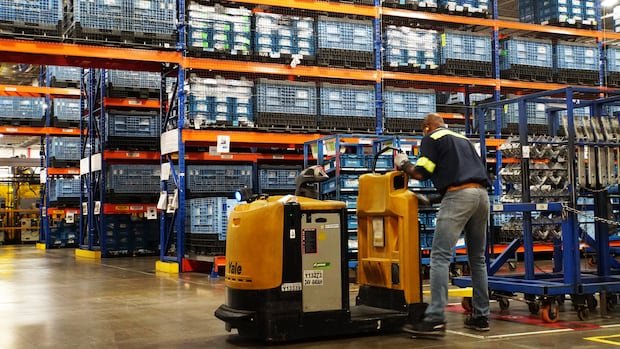Listen to this article
Dear 5 minutes
The audio version of this article is generated using text-to-speech, a technology based on artificial intelligence.
Ontario’s fiscal watchdog says the province could avoid a recession this year, but findings from its latest report show the trade war with the United States is hurting Ontario’s economy.
The data is part of the latest update from the province’s Financial Accountability Office (FAO). It highlights Ontario’s economic difficulties between April and September, in the months immediately following the imposition of US President Donald Trump’s tariff policies.
It also delves into the province’s dwindling manufacturing sector, which FAO says has lost approximately 20,600 jobs over the past two years and has come under increased pressure due to the trade war.
“I think the point of the report is that we are in a period of weak economic growth for all the obvious reasons,” said Jeffrey Novak, Ontario’s chief financial responsibility officer.
Ontario’s real gross domestic product (GDP) growth, a broad measure of economic activity, declined 0.6 per cent during the second quarter of the year due to a “significant drop” in exports and “significantly lower” business investment, the report said.

Ontario could avoid ‘technical recession’: FAO
The report contains projections for the third quarter that suggest Ontario could avoid a “technical recession,” defined as two consecutive quarters of declines in real GDP.
While the report notes that the overall economy has changed little, job losses and smaller-than-anticipated gains in retail and manufacturing sales could help the numbers.
But Novak said his office will closely monitor the data as it comes in. The economic uncertainty felt by many employers is still translating into job losses, he said.
“For Ontarians, depending on where you are in the labor market, the labor market is weak,” Novak said.
Ontario’s unemployment rate stood at 7.8 per cent between April and September after rising steadily since the beginning of 2023 for nine consecutive financial quarters. The province lost approximately 1,900 jobs in the third quarter of this year, after a “significant drop of 38,000” in the second quarter.
The report notes that youth unemployment in Ontario rose to 16.8 per cent, the highest rate since 2012, excluding the pandemic.

The report also delves into job losses in the manufacturing sector, saying supply chain disruptions, pandemic-related shutdowns, shipping issues and restructuring of auto plants have compounded challenges for employers. The total share of manufacturing jobs in Ontario’s employment landscape has fallen below 10 per cent for the first time since 1976, the FAO notes.
Finance Minister describes report as “old news”
The number of people unemployed in the province for a “long-term” period of more than six months now represents more than 28 per cent of people out of work in Ontario.
“That’s the highest number we’ve seen since the 1990s,” Novak said. “This is just an indication of the difficulties people are having in the labor market at the moment. We would like to see fewer long-term unemployed people.”
Finance Minister Peter Bethlenfalvy dismissed the report as “old news” dating back to the beginning of the year. But he did note that the report projects Ontario’s economy will grow at a faster rate than the province’s own fiscal estimates.
The FAO projects that Ontario’s real GDP growth will slow to 0.9 per cent by 2025. Ontario’s fall economic report projected that growth at 0.8 per cent earlier this month.
“We are doing everything we can to support and protect Ontario families, businesses and workers,” Bethlenfalvy said at a news conference Wednesday, responding to questions about the report.
NDP Leader Marit Stiles criticized the government’s record on jobs and pointed to the FAO report as evidence that the Conservatives are not doing enough to address the impact of the tariffs.
And while the province may not fall into a technical recession, that’s “little comfort” to people struggling to find work, he said.
The fiscal projection is a “blow in the stomach,” says the opposition
“I think the reality is that people are having trouble paying their rent and mortgages. More and more people are having a hard time finding good jobs,” Stiles said.
Liberal Parliamentary Leader John Fraser said the FAO data further underscores that Ontario’s economy is in trouble. He questioned whether the Ford government’s tariff response measures are working.
“I don’t think they have a real plan,” Fraser said.
Green Party leader Mike Schreiner called the data a “punch in the gut” for workers and their families. The province could create jobs by investing in the manufacturing of electric vehicles and renewable energy “made in Ontario,” he said.
“If you want to have an industrial strategy, you need to present a complete plan that really works,” he said. “And the Ford government didn’t do it.”









